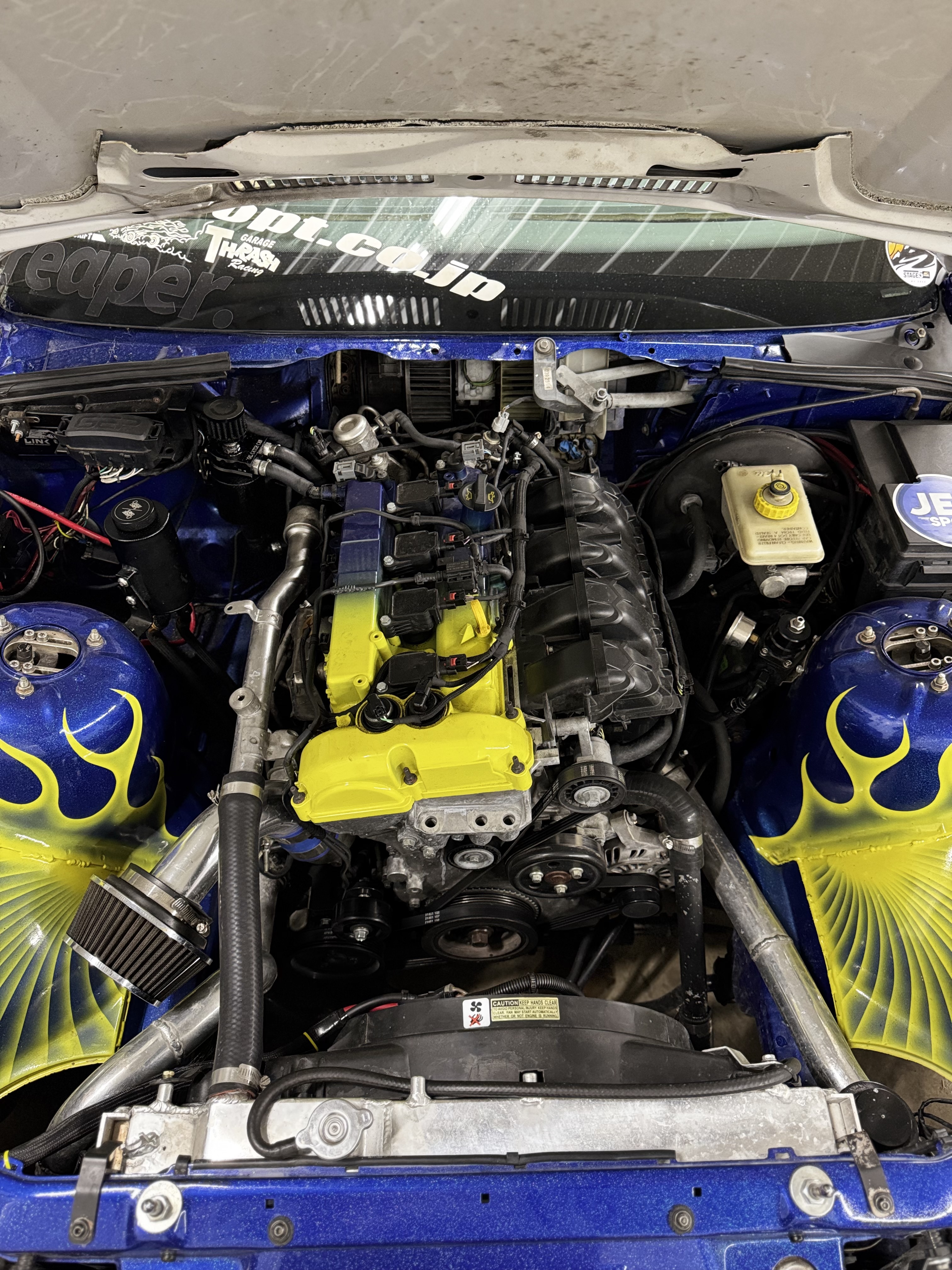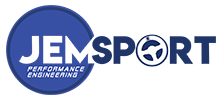E36/46 Ecoboost Swap How-To:
Step 1: Prepare the chassis.
You will start by removing the blower motor cover. Once removed, some slight trimming will be needed for the HPFP to clear the firewall. ( You may need to install the engine a few times to get the cut right. ) This isn't a structural part of the chassis, so don't stress cutting too much.
Now that you have room for the engine, there's one more step: Removing the OEM radiator mounts. This applies to E36 & E46 models if you prefer a simple radiator hose setup. (If you keep the OE radiator, the hoses will cross over from side to side. ) We offer brackets to install a Mazda Miata radiator, as well as a hose kit to make an overall ease of install.
Step 2: Prepare the drivetrain.
There are a few key steps to get the engine ready to go in the car. First, you will need to remove the OEM oil pan and pull off the balance shaft. Once removed, install a balance shaft delete plug. This is required as the engine is too tall with the balance shaft on to fit into the car properly. Now that the BDP is installed, we can install an oil pan.
You have 2 options for the oil pan. The first option would be to purchase our billet rear sump pan that holds 6 quarts and comes with a baffle. The second option is an oil pan from a 03-11 Ford Ranger 2.3 Duratec. We have found it best to source this pan new from Rock Auto. This pan only holds 4 quarts and requires modification to the oil pick-up tube.
Now that you have your oil pan selected and on the car, let's get those JEM-Sport engine brackets on. (E36 / E46: make sure to select the correct engine, 2.0 or 2.3) These brackets utilize the OEM engine bushing! So make sure to save your OEM engine mounts if they're in good condition!
The last step is installing your ZF5/ZF6 transmission adapter. If you have an aftermarket clutch rated for the power of the EB, don't throw it out, as you can still use it with our kit!

It's that simple!
Your transmission remains in the OEM location, meaning nothing from the transmission back needs touched. No cutting up a shifter hole, no custom driveshaft and, No crazy one-off trasnmission mount!
Now that the motors in, Let's talk plumbing.
Fueling:
You might think that because the Ecoboost is direct injection, there's a different recipe for fueling than usual, but it's actually quite simple. To start, we recommend a minimum of a 255 L/ph fuel pump. The in-tank fuel pumps' job is to feed the HPFP(High Pressure Fuel Pump). We like to call the in-tank fueling side of the systems the "Low-side," and as for the HPFP's side, we call that the "High-side."
To regulate the low-side fuel pressure, we HIGHLY recommend using the shown Radium FPR. This regulator has many options for fuel line size & vacuum line port fittings. Another key feature of this regulator is the ease of adjusting fuel pressure. We insist that you set the base "low side" fuel pressure to 58 psi and be sure to install a vacuum source.
Fuel line routing will consist of 2 lines coming from the fuel tank. A feed line and a return line. Both of these hoses will hook up to one side of the regulator, and on the other side of the regulator, you will need to run 1 hose to the HPFP.

